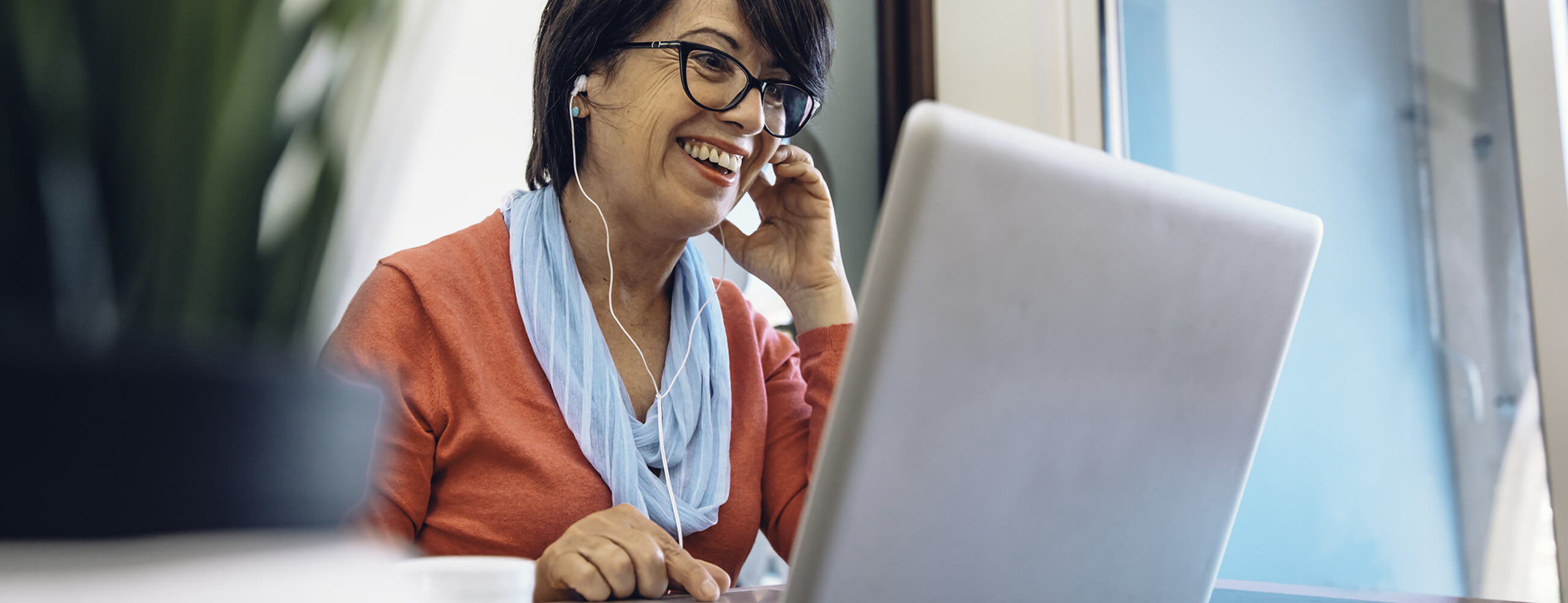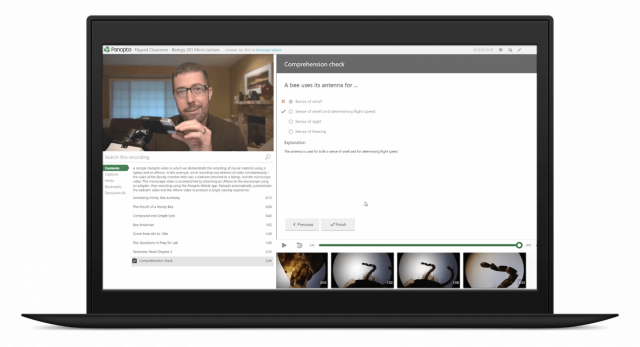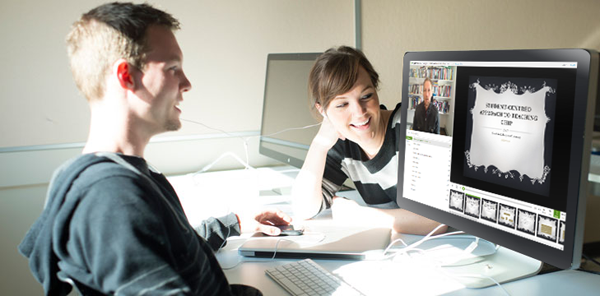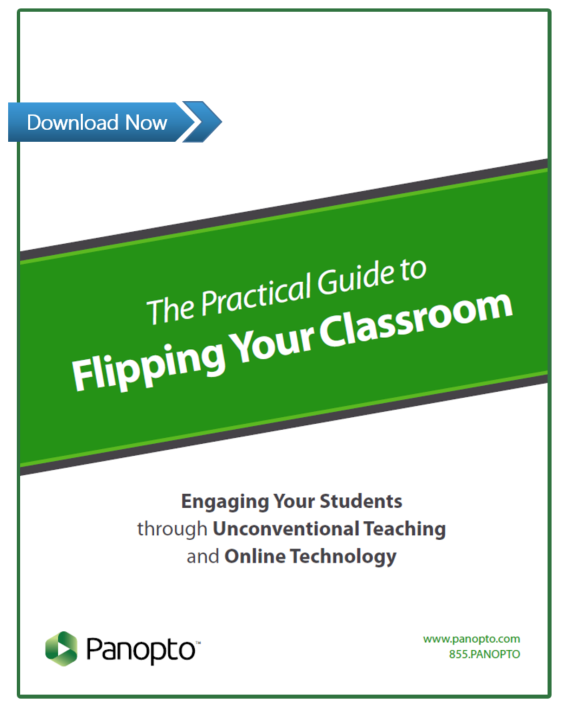- Academic Technology
Preparing to Flip Your Classroom? Here’s What To Plan For

Even before the pandemic changed the educational landscape in 2020, flipped learning was already catching on. However, for instructors and administrators who’ve never flipped a classroom, making the switch can seem daunting – after all, flipping redefines what’s required of the educator. First, it requires that lesson materials be made available ahead of class time. Second, it requires teachers to use in-class time for active learning instead of passive learning.
Fortunately, instructors who are new to flipping can learn from the experiments and lessons of thousands of teachers across all levels of academia who have already made the switch. This growing community is contributing an ever-increasing body of knowledge to help other instructors make their first flipped classrooms a success.
As with any classroom change, preparation is essential. Establishing expectations for yourself and your students will be instrumental to ensuring everything runs smoothly. This is a great place to start planning how you’ll flip your class next semester.
Preparing Yourself for the Flip
In a flipped classroom, the traditional boundaries between lectures, assignments, activities, and assessments are fuzzier than with traditional teaching methodologies. That change will produce a few unexpected challenges and require a few adjustments to established working styles.
To assist in making these adjustments, and to help you plan for a successful flipped classroom, here are a few things to expect:
Plan to spend time developing course content and in-class activities
As with any course material, the first step to planning a flipped classroom is to identify what you will and won’t cover.
Here, though, the flipped classroom diverges from traditional teaching. Using the traditional model, every in-class lesson or lecture has a fixed duration and a common menu of formats, the most common being a slide presentation.
 With a flipped classroom, you aren’t bound by a fixed-duration lesson or by traditional delivery formats that work well in class. Your lesson materials may include a short video presentation, curated video content, podcasts, pointers to other websites, or virtually any other learning resource you choose. Class time is no longer built around one-way presentations, and instead can be dedicated to discussions, experiments, projects, and demonstrations.
With a flipped classroom, you aren’t bound by a fixed-duration lesson or by traditional delivery formats that work well in class. Your lesson materials may include a short video presentation, curated video content, podcasts, pointers to other websites, or virtually any other learning resource you choose. Class time is no longer built around one-way presentations, and instead can be dedicated to discussions, experiments, projects, and demonstrations.
Plan to set aside extra time for designing lessons that engage students outside of the classroom.
Plan to experiment and iterate
When you begin planning the content for your flipped course, it may not be obvious which topics would benefit most from the flip, which activities students will find most engaging, which content should be developed from scratch and which should be curated, how to pace your material, and how to structure pre-class and in-class assessments.
As with any change to your pedagogical approach, experimentation and iteration will be critical. This is particularly the case with the flipped classroom, an approach that introduces new complexity with the increased interactions between teachers and students.
Chances are, things won’t go perfectly on your first iteration. That’s okay. If you review each activity and content block, eliminating things that don’t work, trying new approaches, and mixing up your content sources and delivery styles, you’ll see improvements with each subsequent iteration.
Engage teaching assistants
Should you be fortunate enough to have the support of a student working in a teaching assistant or graduate assistant role, take time to walk that person through your plan for flipping, and what their role will entail. Because the in-class lecture will be minimized or eliminated, the TA should expect to take a more active role during class time, engaging with students in problem solving, discussions, and labs. Outside of class, TA support can also include recording mini-lectures and assisting with structuring your digital classroom.
Get to know your technology
From recording lecture videos to leveraging your school’s LMS, technology gives you the power to flip your classes independently. Of course, it’s also important to know where to find technical support when you need it. Your academic technology team can offer advice on using your specific learning technologies to unlock the full benefits of the flipped classroom pedagogy.
Preparing Your Students for Change
Once you’ve prepared yourself, the next step is to set clear expectations and lines of communication for your students.
It’s easy to imagine students as infinitely flexible and always open to something new, particularly when it comes to adopting a new technology. However, the traditional learning model is quite familiar to students too, and it’s not uncommon for some to express reservations about a change. It’s therefore important that students understand the benefits of the flipped classroom, and when they do have concerns, that you and your teaching staff are ready to respond.
Spend a class session setting expectations
Along with the standard discussion of the course syllabus, plan to spend the first day of class explaining your reason for flipping and how students can best approach the new format. Come prepared to share examples of what they’ll see in the lecture recordings, and what they can expect for in-class activities. Just knowing what to expect will help boost student confidence when it’s time for the actual lessons to begin.

Share an introductory video with your class to show them what to expect in recorded lectures.
Let students know what they stand to gain
For students new to the flipped class model, emphasizing the benefits upfront will help foster a sense of enthusiasm. For example, most students are excited to hear that they’ll always have access to recorded course materials for asynchronous learning. This aids in their study and enables them to learn at their own pace. Students are also often interested to know that they won’t be subjected to “death by PowerPoint” during class time, nor will they be required to spend class time frantically scribbling or typing notes. The message to students should be clear: the flipped classroom model is a more engaging way to learn with the potential to dramatically improve their performance.
Emphasize student responsibility for coming to class prepared
Students may not immediately recognize how essential it is to watch pre-class video assignments. Once they realize that in an interactive classroom they’ll only be able to participate if they’ve put the work in upfront, the majority will happily watch the videos.
As part of this, you should provide details on how students can access pre-class recordings and other materials. Then, to avoid the trap of becoming the de facto IT support for your students, it’s a good practice to clearly communicate their responsibility for completing the online lessons.
As you introduce the flipped class format, encourage students to discuss accommodations with you privately if they think they may have at-home connectivity challenges or if they have other accessibility needs.

In a year-long pilot, Ball State found that the vast majority regularly watched their flipped classroom lectures.
For K-12 classrooms, keep parents in the loop
As parents increasingly seek to understand their children’s learning environments, teachers who flip should expect to get questions from curious moms and dads. As with students, you can help mitigate concerns by being proactive in communicating the benefits of the pedagogy and setting clear, transparent expectations. As part of this, you may want to encourage parents to follow along, watching videos throughout the semester in order to gain a better understanding of what their child is learning.
How to Flip a Class: 5 Frequently Asked Questions
 Whether you’re preparing your students, their parents, or your school for a shift to the flipped classroom, there are a few questions that almost invariably enter the conversation. Here are five of the most common questions you should be prepared to answer.
Whether you’re preparing your students, their parents, or your school for a shift to the flipped classroom, there are a few questions that almost invariably enter the conversation. Here are five of the most common questions you should be prepared to answer.
1 . Will flipping take the teaching responsibility away from teachers and place it on the students?
No. A common misunderstanding is that flipping the classroom requires less instructor engagement, leaving students to fend for themselves. As experienced educators and students know, the opposite is true. The flipped classroom provides teachers with more time to cover content in greater depth, to foster collaboration and critical thinking, and to spend time tending to individual student needs and questions.
2 . Won’t students learn more effectively if they’re hearing the lecture in person, directly from the instructor?
Not necessarily. The flipped classroom actually brings teachers and students closer together. With lecture materials reviewed at home, educators no longer have to teach “to the center,” accommodating the average student while boring the more advanced learners and overwhelming those who need extra time. With on-demand course videos, students can drive the pace of their own learning.
3 . What happens to homework in the flipped classroom?
“Homework” in the flipped classroom may have multiple meanings. Most often, the work done outside of class will be watching video lectures. Traditional homework, such as essays and problem-solving exercises, still exists; but in many cases, students will work on those assignments during live class sessions where they can ask questions, learn from peers, and actively apply their knowledge in a collaborative environment.
4 . Without a lecture, what do students do during class time?
The most valuable element of every flipped classroom is the opportunity for deeper learning during class time. Students have more opportunities to engage with their teacher and collaborate with classmates when classroom activities include case-based learning, problem-solving, role-playing, demonstrations, peer instruction, and more.
5 . How will students be evaluated in the flipped classroom?
Student retention of material will most often be tested through in-class tests and quizzes. Depending on the technologies used to support the flipped classroom, some assessments may be done online. Along with traditional midterm and final exams, graded assignments often make up the majority of students’ final grades. Note that in a flipped classroom, assessments may also take the form of student video presentations.
Next Steps: Record a Flipped Class Video
With clear communication and expectations, consistent behavior, and a few simple strategies, any instructor can flip their class.
Join teachers from around the world at the forefront of the flipped classroom pedagogy who use Panopto to flip their classrooms. Panopto Express lets you easily record learning-optimized course videos using just your laptop and webcam, without downloading or installing any software, for free.
Record your first flipped classroom video with Panopto today
No free trial limitations. Nothing to install. No user account or credit card required.


